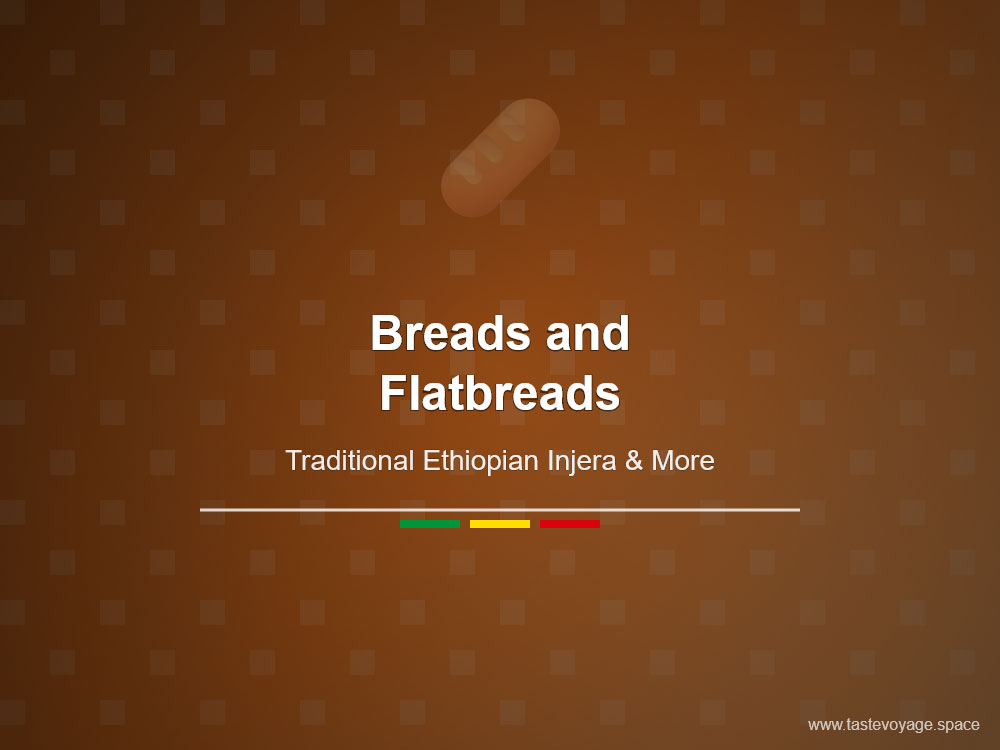How to Make Authentic Ethiopian Multi-Grain Flatbread
Travel the World Through Food >> Breads and Flatbreads>>Ethiopian Cuisine>> How to Make Authentic Ethiopian Multi-Grain Flatbread
How to Make Authentic Ethiopian Multi-Grain Flatbread
How to Make Ethiopian Multi-Grain Flatbread
Ethiopian cuisine is renowned for its vibrant flavors, rich traditions, and unique culinary techniques. Among its many treasured dishes, Ethiopian multi-grain flatbread stands out as a fundamental staple that embodies the cultural essence of the nation. This bread is more than just a food item; it is a symbol of community, tradition, and daily life. Its significance extends beyond nourishment, reflecting Ethiopia’s deep-rooted agricultural history and diverse culinary heritage.
The Cultural Significance of Ethiopian Flatbread
In Ethiopia, flatbread is a cornerstone of hospitality and social gatherings. Known locally by names like injera or kinche, this bread often serves as a communal plate for sharing meals. It fosters a sense of togetherness, as families and friends gather around a large piece of flatbread to enjoy various stews and side dishes. Its presence on the dining table illustrates the importance of communal eating, which is central to Ethiopian social customs.
The preparation of Ethiopian multi-grain flatbread also holds cultural importance. Traditionally, families pass down recipes through generations, preserving not only techniques but also cultural identity. The process involves a careful selection of grains and fermentation, showcasing Ethiopia’s agricultural diversity. This bread is often made using a combination of grains such as teff, barley, millet, and sorghum, each contributing unique flavors and nutritional benefits. The diversity of grains reflects Ethiopia’s rich agricultural landscape and its long-standing reliance on diverse crops.
Culinary Significance and Unique Characteristics
Ethiopian multi-grain flatbread is celebrated for its distinctive taste, texture, and nutritional value. The combination of grains creates a complex flavor profile that is slightly tangy, earthy, and mildly sour, thanks to natural fermentation. The bread’s spongy texture makes it perfect for scooping up stews, lentils, and vegetables, making it an integral part of Ethiopia’s beloved communal meals.
This flatbread also plays a vital role in promoting a healthy diet. Its multi-grain composition provides a wealth of nutrients, including fiber, proteins, and essential minerals. The fermentation process enhances digestibility and adds depth to the flavor, making it as nourishing as it is delicious. Its resilience and adaptability have allowed it to remain a staple food across generations, symbolizing Ethiopia’s resilience and enduring culinary traditions.
Celebrating Ethiopian Food Culture
Ethiopian multi-grain flatbread exemplifies the richness of Ethiopia’s culinary landscape. It highlights the importance of local ingredients and Traditional Preparation methods. For those eager to explore Ethiopian cuisine, this bread offers a flavorful introduction to the country’s food culture. It invites you to experience the Authentic Taste of Ethiopia and appreciate its culinary artistry.
In summary, Ethiopian multi-grain flatbread is much more than sustenance; it is a cultural icon that encapsulates Ethiopia’s history, agricultural diversity, and social values. Its unique flavors, nutritional benefits, and role in communal dining make it a cherished part of Ethiopia’s culinary heritage. Whether enjoyed at a family gathering or prepared for special occasions, this flatbread stands as a testament to Ethiopia’s enduring food traditions and vibrant cultural identity.
